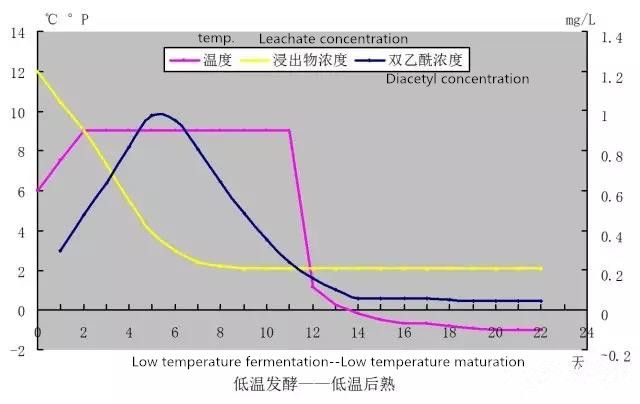During the main fermentation period, the focus of technical control is temperature, concentration and time. The three are mutually constrained and complement each other. The fermentation temperature is low, the concentration is slow, and the fermentation time is long; on the contrary, the fermentation temperature is high, the concentration is decreased rapidly, and the fermentation time is short. The basis of the three control is related to the type of product, yeast species, and wort composition. The purpose of control is to achieve the required degree of fermentation and metabolites in the shortest time.
Temperature control
Beer fermentation is a variable temperature fermentation, and fermentation temperature refers to the highest temperature in the main fermentation stage. For traditional reasons, beer fermentation temperature is generally lower than the optimum growth temperature of beer yeast (25-28 ° C). The inoculation temperature of the above fermented beer is generally controlled at 18 to 20 ° C, and the inoculation temperature of the fermented beer below is generally controlled at 8 to 10 ° C.
The main fermentation starting temperature using a low temperature fermentation process is 5 to 7 ° C, generally 6.5 to 7 ° C. The maximum temperature of fermentation varies depending on the species and the composition of the wort, and is generally 8 to 10 °C. The lower temperature is beneficial to reduce the amount of fermentation by-products, the formation of α-acetolactate is reduced, the production of diacetyl, higher alcohol, acetaldehyde, H2S and dimethyl sulfide is also reduced, the beer taste is refreshed, and the foam properties are improved. Good, suitable for the production of light beer.
The temperature at the end of the fermentation is generally controlled at 5 °C. Lowering the temperature to make the yeast agglutinate and precipitate, only a certain concentration of yeast is retained in the liquor, which is convenient for post-fermentation and diacetyl reduction; continue to lower the temperature to 0~-0.5 °C for low-temperature storage, to clarify the wine and to saturate the carbon dioxide, otherwise it will Extend the period of storage.
Concentration control
Under certain conditions of yeast and wort, the concentration is controlled by adjusting the fermentation temperature and fermentation time. If the fermentation is strong and the sugar consumption is fast, the maximum temperature of the fermentation and the holding time of the maximum temperature should be appropriately reduced; otherwise, the maximum temperature holding time or the slow cooling method should be extended to promote the consumption of sugar.
Time control
The fermentation time depends mainly on the fermentation temperature under certain wort ingredients, yeast activity and certain fermentation requirements. If the fermentation temperature is high, the fermentation time is short and vice versa.
The main fermentation time of the fermentation below is generally controlled at 7 to 10 days. The wine slowly fermented at a low temperature, the flavor is soft and mellow, the foam is fine and durable, but the equipment utilization rate is low. The main fermentation time of the above fermentation is generally controlled at 5 to 8 days, the fermentation speed of the yeast is fast, the fermentation time is short, the fragrance is prominent, and the utilization rate of the equipment is high.
The low-temperature long-term main fermentation can ferment the fermentation liquid in a balanced manner, the pH drops slowly, and the hop resin and protein are slightly precipitated to make the beer alcoholic, the fragrance is good, and the foam is fine and durable. The main fermentation time of 10~12oP beer is 6-8 days.
